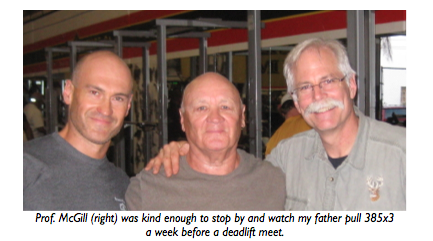
photo and article from StrongFirst Blog
I am often asked for my opinion about the best way to squat, or pull a loaded bar. My answer always is, “It depends on the person.”
We all have a different injury history influencing which tissues may need sparing, different body segment length ratios affecting leverage advantages, different hip socket depths that determine the depth of the squat before the pelvis tucks stressing the lumbar discs, etc. What is best for one person will not be best for their training partner.
Here is a drill I use that will help all lifters set-up their pulls, despite their individual differences. We call it the short-stop squat. If you know American Baseball, you will catch on very quickly.
Begin with the feet apart. Try a few knee bends and adjust the internal/external rotation of the hip, to get perfect knee and ankle hinge tracking. Now look at the turn out of your feet. Remember this angle and start in this position.
Now to start the drill, stand tall and place the hands on the top of the front of the thighs. Make a “V” between the thumbs and the finger. Keeping the arms straight, push the hands down the thighs, only hinging about the hips—do not allow the spine to bend. Stop as the hands reach just above the kneecap and robustly grab around the knee. This is the short stop posture.
Check the position of the knee. If you drew a vertical line down from the knee it will fall between the balls of the feet and the heels. This ensures that the hips are well behind. Play with your balance so you feel the centre of pressure from the ground in the middle of your feet.
Enjoy carrying the weight of your upper body down the arms and onto the thighs. Focus on the curves in your torso – are they the same as when you were standing? If they are you have good form. If they are not, adjust them back to the natural curves.
To lift from this position, many will shrug. You will not. You will perform the “anti-shrug” by compressing the shoulders down into your torso with co-contraction of the pectoral and latissimus dorsi muscles.
Continue reading by clicking HERE
See Stu McGill at the 2013 BSMPG Summer Seminar - May 17 & 18th



